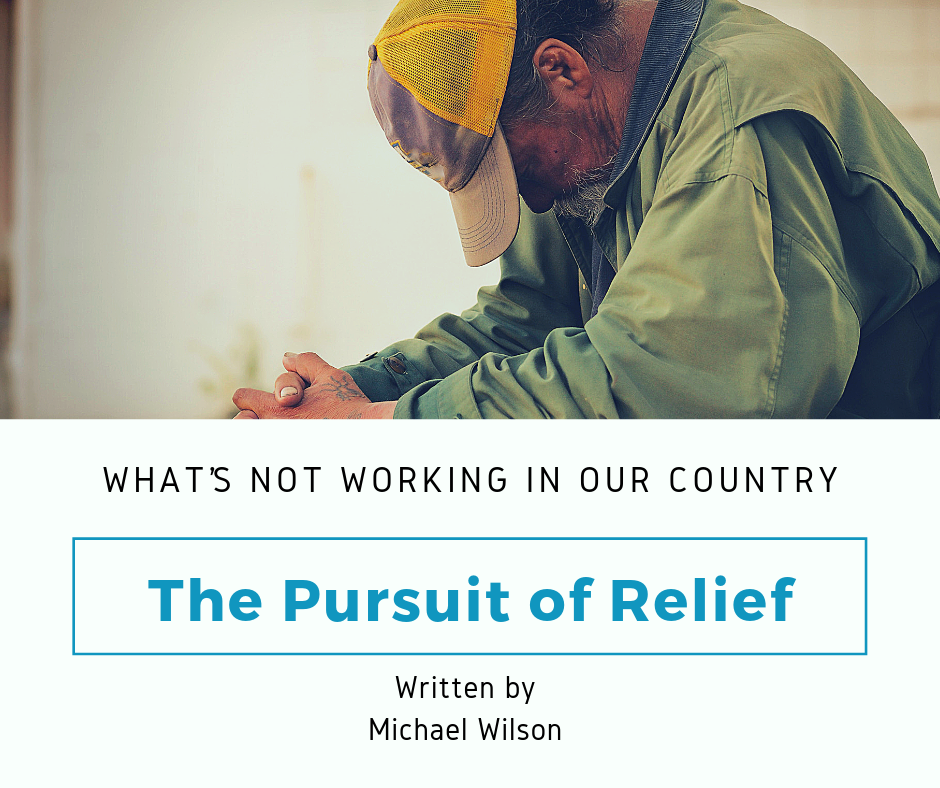The pursuit of relief
This is not our first public health crisis related to substance abuse in the United States. It is also not our first attempt to fight it through politics and public policy change. Decades of misplaced efforts, and poorly allocated funds, have left our country and its citizens worse off than when we started. How did this happen?
In 1971 the Nixon era brought us the “WAR” on drugs. Nixon proclaimed, “America’s public enemy number one in the United States is drug abuse. In order to fight and defeat this enemy, it is necessary to wage a new, all-out offensive”. In his address to congress he stated, “…as long as there is a demand, there will be those willing to take the risks of meeting the demand”. He also publicly proclaimed that all efforts of interdiction and eradication are destined to fail.
This war on drugs, although stated otherwise, focused the majority of its efforts and funding toward the interdiction and eradication of illegal substances entering the United States, and as a result the DEA was created in 1973.
In 1977 President Carter continued the misguided efforts of the Nixon war, by focusing a majority of his office’s resources on more interdiction and eradication programs.
In 1981 president Reagan said, “It’s far more effective if you take the customers away than if you try to take the drugs away from those who want to be customers.” He also stated that fighting the supply side of the drug war was a losing proposition, and as a result his demand focused “zero tolerance” program was born. Another failed policy that criminalized addiction and punished the “customers”, rather than treating the demand.
During the Clinton presidency there were more demand-focused policies, centered on treatment and education, but many were shot down in congress, and as a result, the supply-focused war continued. Many great programs have been initiated since then, and the fight continues on the ground today through the many grassroots efforts born during this era. Many of these were developed by the individuals fighting for their lives, and offered client-centered services nationwide.
Through the decades leading up to this current epidemic, there have been many views expressed, both political and professional, focused on the sincere desire of addressing, and hopefully eradicating, the long-standing human condition of relief seeking behavior through substance use.
They have tried attacking the users through the eyes of moralism, previously adopted in the 19th century, where the user is morally defective for using or abusing the substance, and therefore must be punished.
They have tried attacking the supply. This effort was primarily based on the temperance movement of the early 1800’s, which considers the drug itself as the “cause” of the problem and must be reduced or stopped to prevent the spread of the problem, or the addiction.
Thankfully in recent years we have finally begun treating this epidemic as a disease and a public health crisis, rather than a moral failing, but our supply-focused efforts still dominate the funding for this issue.
The human condition that creates the demand is not being addressed, and the uptick in the use of substances and the ever-growing overdose numbers should be evidence enough of these failed policy efforts, but somehow, they are not. Although I don’t have the answer to this problem, I do know what’s not working. It has been not working on a public stage for all to see for many years, regardless of how hard we try attacking the supply.
Our country is broken, its citizens are in pain, and our humanity is fading. We are somehow no longer impacted by the significant loss of human life in our country, and our policies do not reflect the significance of this epidemic. There are many existing policies and humane efforts being implemented in other countries that unfortunately may never be adopted by our country, due to a discouraging pattern of old thinking which has helped fuel this crisis.
So what needs to change? Who will save us from ourselves? How will we reconnect and rehumanize the population, so that we once again see people, instead of statistics? How will we create a new generation of American citizens that will not have to live with the unnecessary loss of human life that we experience daily in our country?
Like you, I am frustrated. Like you, I hope for a better world for my children and my children’s children. Like you, I am doing my best to stop the bleeding, but something else needs to happen. Something needs to change in how we address this crisis, and it needs to address the demand.
If our country continues to break down as it has then how can we blame current and future generations for wanting to disconnect and escape? How can we blame them for their frustration with the condition of the world they have inherited?
In years past, Americans were born into this country proud to be a part of the American dream because it was supposed to be an option for all. Now we are bringing a generation of confused and dislocated youth into a world that they cannot control, with a future that is uncertain. I have more questions than answers, but I know what’s not working and I hope that you, like me, are willing to fight for the change that’s needed.
